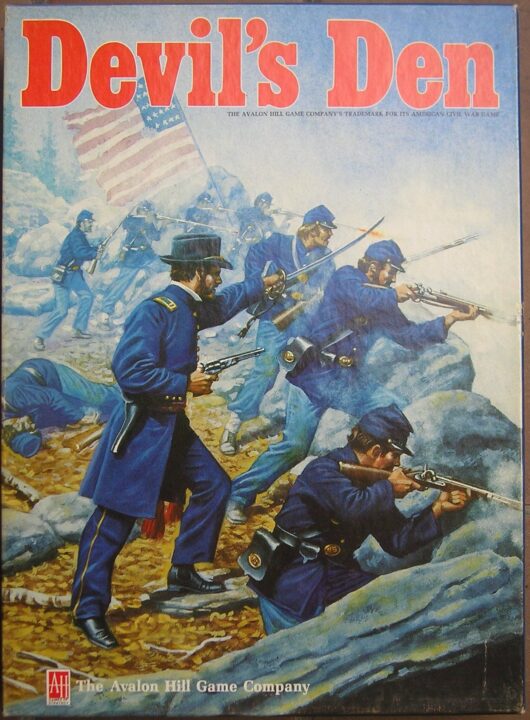Time for some truth: I have a love-hate thing with games where your friends turn on you faster than a cat hearing a cucumber drop. Welcome to my review of Devil’s Den. I gathered my usual crew for several rounds (and, okay, some snacks and a few suspicious side-eyes). Let me tell you, I still trust no one. This review covers the good, bad, and those moments when you realize your bestie is, in fact, the devil in disguise…
How It Plays
Setting up
To start, everyone grabs a character card and some evil-looking tokens. Place the big Devil’s Den board in the middle. Shuffle the deck, deal cards, and set out all the little trinkets. Prepare for accusations, because trust will vanish quick!
Gameplay
On your turn, you move around the Den, collect resources, and play action cards. Someone always tries to backstab you, so keep your eyes open. Trade, beg, and bluff your way to building alliances—then break them. The dice add a spicy bit of luck, but smart moves usually win the day (unless your friend Carl is lying to you again).
Winning the game
The game ends when someone collects the required number of hidden relics or is the last survivor in the Den. Count your spoils and betrayals—whoever met their win condition first gets the victory. The losers get to start plotting revenge for next time.
Want to know more? Read our extensive strategy guide for Devil’s Den.
How Devil’s Den Mixes Chaos and Clever Moves: A Look at Gameplay and Interaction
If you ever sat at a table and wanted to see your friends scream in panic, Devil’s Den might be what you’re after. This game is like someone took chess, added more traps, and then made the pieces argue with each other. The gameplay puts you on edge from the start. Everyone picks a faction and sets up on a map that looks like a medieval fever dream. You’re out to control the central den, but so is everyone else—and nobody is playing fair.
Devil’s Den is not a roll-and-move snoozefest. You need to plan, but you also have to adapt because the other players will mess you up every chance they get. My first game, I thought I had the den locked down. Next thing, my best friend blindsided me by springing a trap. I won’t repeat what I called him. The biggest surprise is the game’s mechanic where you can bargain, bluff, or straight up lie to get ahead. There’s an optional alliance rule, but I swear it only makes betrayals juicier. You can never trust Dave, not after what he did!
What stands out most is the tension. At every turn, you’re sweating bullets trying to decide who’s actually helping you, or just pretending so they can stab you in the back. The only real downside? If folks gang up, someone can get knocked out early and then they’re left with snacks and regret. Still, when the board changes every round, no one stays bored for long. Next up, I’ll give my honest thoughts on Devil’s Den’s theme and whether the game pieces are as tough as the gameplay—spoiler: the skeleton mini is a bone to pick!
Theme and Component Quality in Devil’s Den: Hellfire Deluxe
The first thing you notice about Devil’s Den is the theme. It’s not your grandma’s happy little village. We’re talking dark forests, fiendish lairs, and plenty of burning torches. Everything screams “danger – enter if you dare!” The artwork feels like someone took a gothic comic book and sprinkled it with a pinch of mischief. My friend Dave, who normally falls asleep at the table, was wide awake just admiring the box art. It sets the tone before you even open the lid.
Now, the components. The game comes with chunky cardboard tokens that could double as frisbees in a pinch. The cards are sturdy, though we did spill some of Shelly’s mysterious dip on them. (Good news: they wipe clean!) The plastic miniatures are another highlight. They’re not quite museum quality, but they look great charging across the board. Bonus points for the tiny horns on the devil figures – I lost one but nobody noticed except my cat.
The rulebook? It’s actually readable! No tiny print, no arcane symbols—thank you, Devil’s Den. And the board itself folds flat every time, unlike some games that develop a ski slope after one play. The whole package feels premium for the price. You get that “ooh, this was worth it” feeling as soon as you set up. If they added a soundtrack of distant screams, it’d be perfect.
But is Devil’s Den as fair as it is flashy? Let’s poke the embers and see what smolders in the next section about Balance and fairness of play.
Is Devil’s Den Fair or Just Plain Evil?
Alright, let’s talk balance in Devil’s Den. I have strong feelings about this. I played with five friends, and let me tell you, it got heated. One guy still hasn’t forgiven me for a sneaky betrayal. Sorry, Dave. The game tries hard to be fair, but it still has some moments that feel like the devil is rolling the dice.
Devil’s Den gives you choices. You get to plan, plot, and pretend to be someone’s pal. But sometimes, the game lets a player get too strong, and from there, it can feel impossible to catch up. There’s a “snowball” vibe that can happen if you let someone get ahead early. It’s not game-breaking, but it can be annoying if you’re stuck at the bottom while the leader cackles maniacally. (Dave, I’m looking at you now.)
Luck plays a part, too. Card drawing in Devil’s Den has cost me victory more times than I’d like to admit. You can mitigate some of the randomness, but there are moments you’ll stare at your bad hand and wonder if the game hates you personally. It’s not as out-of-control as some classics, but it’s not chess either.
If you want a perfectly even playing field, Devil’s Den might frustrate you. But if you like a bit of chaos and backstabbing, it’s a blast. In the next section, let’s see whether Devil’s Den keeps bringing us back or just burns out after a few rounds.
How Many Times Can You Escape the Devil’s Den?
When my group first cracked open Devil’s Den, half of us were convinced we’d only play it once. “Another game about haunted basements? Sure, why not,” muttered my friend Mike (who still jumps at his own shadow). But after a couple rounds, the urge to play again was strong—even Mike demanded a rematch, though he insisted on sitting closest to the snacks this time.
Here’s where Devil’s Den shines: every game plays out a bit differently. There’s a mix of strategy, sneaky player moves, and just enough craziness to make you want to try again. You never really know who’ll get tricked or who’ll pull off the win until it’s over. It keeps you guessing and plotting for “just one more round.”
The game length is perfect for weeknight get-togethers. With three or four players, you’re usually done in 45-60 minutes (unless someone overthinks every move—looking at you, Sarah). Setup and clean-up are super quick, so it’s easy to play two or even three times in a row without groans from the table.
If you’re seeking a board game with lots of replay power, Devil’s Den delivers. It’s not a lifelong obsession, but it’ll come off your shelf more often than most. Just don’t blame me when you lose three games in a row to your smug sibling.
My verdict: Devil’s Den is definitely worth a spot on your game night table. Bring snacks and your best poker face.
Conclusion
Well, that wraps up my review of Devil’s Den! If you like bluffing, chaos, and laughing at your friends while plotting their doom, it’s a good pick. The game looks great and sets up quick. But if you hate luck messing with your plans, or don’t enjoy frantic betrayals, you might want to sneak past this one. It’s got some rough edges when it comes to balance, but my group had a blast. So, if you’re after wild, fast fun and don’t mind the odd unfair twist, Devil’s Den could liven up your next game night. Just watch your back—your so-called friends sure won’t!


